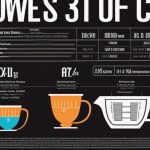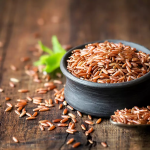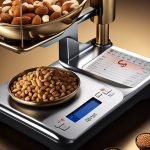Have you ever found yourself in the kitchen, trying to follow a recipe, only to realize that it calls for ounces instead of pounds? Or perhaps you’re at the grocery store and need to convert between the two measurements? Understanding the conversion between ounces and pounds is an essential skill for anyone who loves to cook or bake. In this how-to guide, we will break down the exact measurement of ounces in a pound and provide you with the knowledge you need to confidently convert between the two units. By the end of this post, you’ll be equipped with the tools to easily navigate recipes and measurements without any confusion.
How-To Guide: Converting Ounces to Pounds
As you may know, converting ounces to pounds is a common task in cooking, baking, and many everyday activities. Whether you’re following a recipe or simply need to convert units for a project, it’s important to know how to make this conversion accurately. In this guide, we’ll walk you through the process step by step, so you can confidently convert ounces to pounds whenever you need to.
The Basic Conversion Formula
One of the simplest ways to convert ounces to pounds is by using the basic conversion formula. This formula states that one pound is equal to 16 ounces. Therefore, to convert ounces to pounds, you can divide the number of ounces by 16. This will give you the equivalent weight in pounds.
Step-by-Step Instructions
Conversion instructions for converting ounces to pounds can be broken down into a simple table:
| Ounces | Pounds |
| 16 oz | 1 lb |
| 32 oz | 2 lb |
| 48 oz | 3 lb |
| 64 oz | 4 lb |
Plus, it’s important to remember that when converting ounces to pounds, you should divide the number of ounces by 16 to get the equivalent weight in pounds. Using this table as a reference, you can easily convert smaller or larger amounts of ounces to pounds without any hassle.
Tips for Accurate Measurement
Obviously, getting an accurate measurement is crucial when dealing with ingredients in the kitchen. Here are some tips to ensure that you are measuring with precision:
- Use the right tools for the job, such as a reliable kitchen scale or measuring cups
- Make sure to level off dry ingredients when measuring in cups to avoid excess or insufficient amounts
- Double check your measurements to avoid costly mistakes in your cooking or baking
The key to successful cooking and baking is accurate measurement, so taking the time to measure carefully is essential.
Ensuring Precision in Weighing
Measurement accuracy is crucial, especially when it comes to weighing ingredients. When using a kitchen scale, ensure that it is calibrated and accurate. When weighing, always place your container on the scale first, then zero it out before adding your ingredient. This helps to ensure that you are measuring the ingredient itself and not the container weight.
Common Mistakes to Avoid
With any type of measurement, guessing or estimating can lead to inaccurate results. To ensure precision, avoid eyeballing measurements and instead use the proper tools. Measuring cups should be filled to the top and then leveled off for accuracy.
Tips to avoid these mistakes include using level measurement techniques and ensuring that your tools are clean and in good condition. By taking these precautions, you can achieve consistent and accurate measurement results in your kitchen.
Factors Affecting Weight Conversion
To accurately convert weight from ounces to pounds or vice versa, several factors need to be considered. These factors can affect the precision and accuracy of the conversion process. It is important to take into account the variation in international measurement standards, the role of density and volume in weight conversion, and the influence of specific measurement tools and units.
- Variations in international measurement standards
- The role of density and volume in weight conversion
- Influence of specific measurement tools and units
The precision of weight conversion can also be affected by the temperature and pressure under which the measurements are taken. The accuracy of weight conversion is also influenced by the specific measurement tools and units used in the process. The use of standardized equipment and units can help ensure the accuracy and consistency of weight conversion.
Variations in International Measurement Standards
Measurement standards vary internationally, which can lead to inconsistencies in weight conversion. Differences in units and measurement systems can result in discrepancies when converting weight. It is essential to be aware of these variations and to make the necessary adjustments when converting weight from ounces to pounds or vice versa to ensure accuracy in the process.
The Role of Density and Volume in Weight Conversion
The density and volume of a substance play a significant role in weight conversion. The mass of a substance can vary depending on its density and volume, which can impact the accuracy of weight conversion. It is important to consider these factors when converting weight to ensure precision in the process.
Conversion of weight from ounces to pounds or vice versa requires careful consideration of the density and volume of the substance being measured. Taking these factors into account is crucial for accurate and precise weight conversion. By understanding the role of density and volume in weight conversion, you can ensure that the conversion process is reliable and consistent.
Conclusion
Upon reflecting on the question “How many ounces in a pound?” it is clear that there are 16 ounces in a pound. This standard conversion between the two units of measurement is crucial for various applications in cooking, trade, and other fields. Understanding this simple conversion can be invaluable for anyone working with these units and is a fundamental concept to grasp. With this knowledge, individuals can confidently navigate between ounces and pounds in their daily lives.





